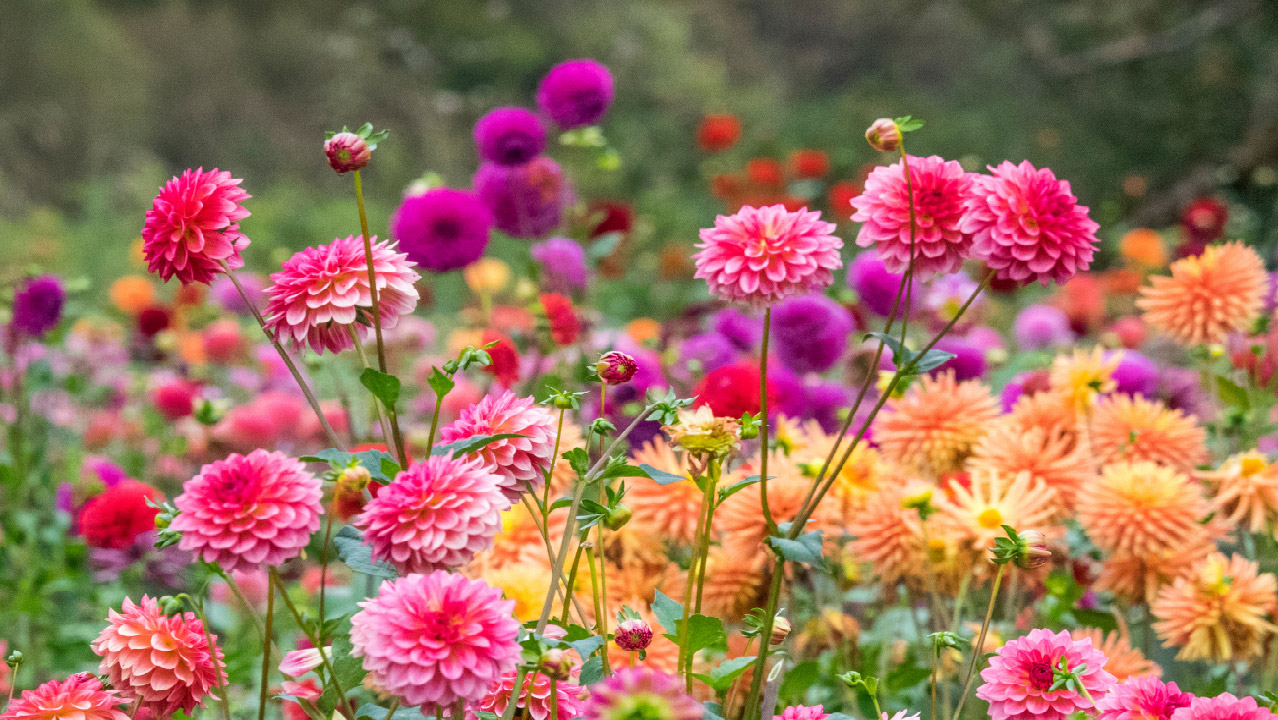How to Water My Flower Beds
May 19th 2023
Whether you have annuals or perennials, thriving outdoor flowers will almost all require watering throughout the growing season. When plants aren't adapted to a specific climate and rainfall, they need a little extra help from us to keep them healthy and happy. Thankfully, there are many ways to keep your flowers watered and vibrant, even in the height of summer.
Caring For Flowers
A good rule of thumb to follow for flowers is to provide one inch of water every 7-10 days during the growing season. This is equal to about five gallons of water for every square yard of soil. Hot and dry conditions may require a bit more. The easiest way to tell is to pay close attention to your flowers. If they are looking a bit wilted, it may be time to increase your weekly watering amount. A quick way to determine soil wetness is the finger test: stick your finger about two inches down into your soil. If it's dry, that means some watering is likely necessary.
When trying to grow flowers in raised garden beds, it's important to keep in mind that they drain much faster than traditional in-ground beds. These beds will require more water than their grounded counterparts, and this is especially true for container flowers. Be sure you understand the type of soil you are dealing with. Quick draining soils like sand will require less water more frequently, and plants in slow draining soils like clay will appreciate fewer waterings. Adding mulch to your garden can also keep moisture in, keep your soil cool in the heat of summer and prevent weeds from growing.
Cool mornings are the best time to water so less is evaporated and more is absorbed into the soil. If any water splashes onto the foliage, it has ample time to dry during the day. Unfortunately, watering at night can attract insects to your plants and to your outdoor seating areas. After they have been established, native flowers and wildflowers will seldom if ever require watering help.
Irrigation For Flower Beds
One of the easiest ways to keep your flowers watered, without relying on your presence and memory, is to use a drip irrigation system. By simply adding a timer to the start of your system, drip irrigation can deliver water right to the roots of your flowers without a hitch. Drip irrigation can also help prevent disease from emerging and spreading in the garden. Less water is sprayed onto the leaves and flowers of your plants, leading to lower instances of fungal infections. For more information, visit our article on Planning Your Drip Irrigation System.
Mini-Sprinklers are another option to include in your drip irrigation system. These work great for larger flower bushes or trees that require a lot of water but don't have concerns with wet foliage low to the ground. Mini sprinklers shut after operation, preventing bugs and dirt from entering the system and they are well-suited for windy areas because of their large water droplets. Soaker driplines offer unparalleled flexibility in designing your optimal layout. They wet the soil evenly and slowly, limiting the evaporation potential.

